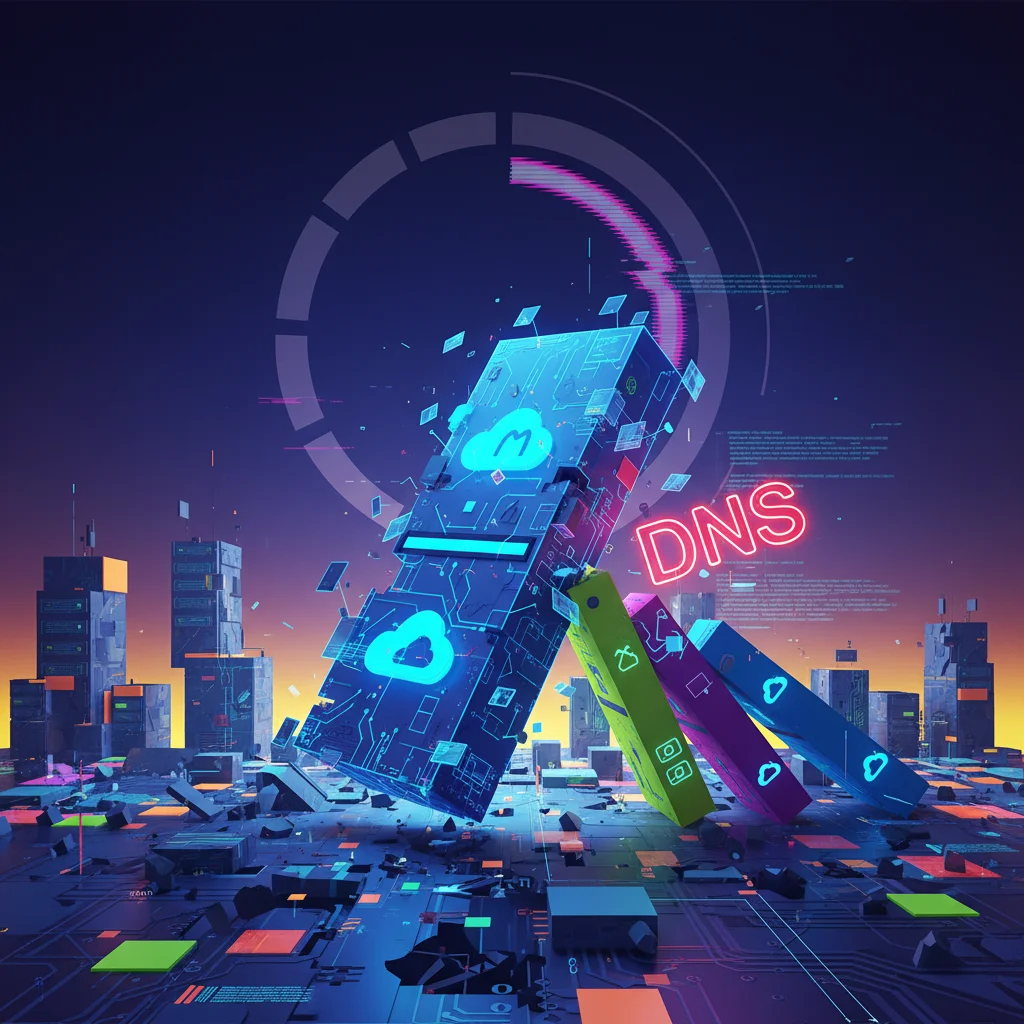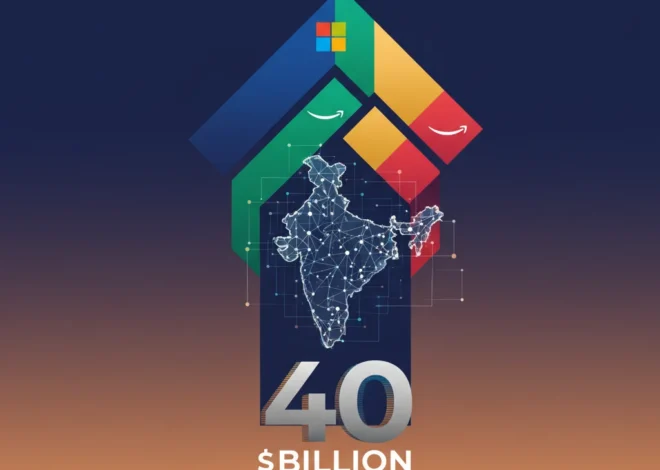
Digital Dominoes: How a DNS Glitch Toppled Microsoft’s Cloud Empire (And What We Learned)
It’s a feeling we’ve all come to know with a unique, modern dread. You try to log into your email, open a critical work document, or join a video call, and… nothing. The loading spinner spins into eternity. You check your Wi-Fi, reboot your machine, but the digital world remains stubbornly silent. On June 5th, 2024, this wasn’t an isolated issue; it was a global phenomenon as millions found themselves locked out of Microsoft’s sprawling digital ecosystem.
In a stark reminder of the fragility of our interconnected world, Microsoft 365 and the Azure cloud computing platform suffered a significant global outage. The culprit? Not a sophisticated cyberattack or a catastrophic hardware failure, but something far more fundamental: a DNS issue. As reported by the BBC, this event left services like Outlook, Teams, and countless websites and applications hosted on Azure inaccessible, drawing immediate parallels to other recent high-profile tech disruptions.
But to dismiss this as “just another outage” is to miss the crucial lesson hidden within the digital silence. This event is a critical case study for developers, entrepreneurs, and tech leaders everywhere. It peels back the curtain on the internet’s core infrastructure, revealing both its elegant design and its potential for catastrophic failure. Let’s dissect what happened, why it matters, and how we can build a more resilient digital future using innovation, automation, and artificial intelligence.
The Anatomy of a Digital Blackout: What is DNS?
To understand the magnitude of this outage, we first need to talk about the internet’s unsung hero: the Domain Name System, or DNS. Think of DNS as the internet’s phone book. When you type a website address like “www.google.com” into your browser, your computer doesn’t magically know where to find it on the vast global network. It first has to look up that human-friendly name in the DNS phone book to find the corresponding IP address (a series of numbers like 142.250.191.46) that identifies the actual server.
This lookup process happens in milliseconds, and it’s the very first step to accessing almost anything online. Now, imagine that phone book suddenly vanishes. You can have a perfectly functioning phone line (your internet connection) and the person you want to call can be waiting by their phone (the server is online), but without the phone number, you simply can’t connect.
That’s precisely what happened to Microsoft. A failure within their DNS infrastructure meant that for users around the globe, the “phone numbers” for Outlook, Azure, and Teams were suddenly unreachable. The services themselves were likely running fine in their data centers, but the pathway to reach them was broken. This is the definition of a single point of failure—a single component whose failure can bring down the entire system.
Eyes in the Sky: How Belgium's AI Drone Network Aims to Win the Invisible Wars of Tomorrow
Déjà Vu: A Troubling Pattern of Cloud Fragility
If this scenario sounds familiar, it’s because it is. The Microsoft outage is just the latest in a series of major disruptions that have exposed the vulnerabilities of a highly centralized internet. From the massive AWS outage in 2021 that took down a huge chunk of the web to the Fastly CDN failure that silenced global news outlets, these events highlight a systemic risk.
While cloud providers offer incredible power and scalability, the industry’s consolidation around a few “hyperscalers” (Amazon Web Services, Microsoft Azure, and Google Cloud) means that a problem in one of their core systems can have an outsized, cascading impact. For the thousands of startups and established companies that build their software and SaaS products on these platforms, an Azure outage is their outage.
To put this into perspective, let’s compare some of the major internet outages of the past few years.
| Outage Event | Date | Primary Cause | Impacted Services |
|---|---|---|---|
| Microsoft Azure & 365 | June 2024 | DNS Resolution Issues | Outlook, Teams, Azure Portal, various Azure services |
| Amazon Web Services (AWS) US-EAST-1 | December 2021 | Internal Network Device Failure | Disney+, Netflix, Slack, Amazon.com, countless other websites and apps (source) |
| Fastly CDN | June 2021 | Software Bug Triggered by a Customer | The Guardian, New York Times, Reddit, Twitch, UK Government website (source) |
| Facebook (Meta) | October 2021 | BGP Configuration Error | Facebook, Instagram, WhatsApp, Messenger, Oculus VR |
This table illustrates a clear pattern: core infrastructure services—DNS, networking, CDNs—are often the root cause. The very systems designed to make the internet fast and reliable can also be its Achilles’ heel.
The Ripple Effect: Calculating the Staggering Cost of Downtime
For a casual user, an outage is an inconvenience. For a business, it’s a financial catastrophe. The impact of downtime extends far beyond the inability to send an email. It’s a multi-layered crisis that hits revenue, productivity, and reputation.
Consider the immediate effects:
- Lost Revenue: E-commerce sites can’t process orders. SaaS platforms can’t serve customers. Ad-supported services can’t display ads. Every minute of downtime translates directly into lost money.
- Productivity Collapse: With tools like Microsoft Teams and Outlook offline, internal communication and collaboration grind to a halt. Projects are delayed, and deadlines are missed.
- Reputational Damage: Reliability is a cornerstone of trust. For startups trying to win market share, an outage can be devastating, eroding customer confidence and potentially violating Service Level Agreements (SLAs).
The numbers are staggering. According to a 2022 survey by the Information Technology Industry Council (ITIC), 91% of organizations reported that a single hour of downtime costs them over $300,000, with 44% stating that the cost exceeds $1 million (source). When an outage scales to the size of Microsoft’s, the collective global economic impact can easily run into the billions.
This is where the conversation turns to cybersecurity and business continuity. While this outage was a technical glitch, DNS infrastructure is also a prime target for malicious attacks like DDoS (Distributed Denial of Service). A robust disaster recovery plan is no longer a “nice-to-have” for IT departments; it’s a fundamental requirement for business survival.
When Code Becomes the Accuser: The BT Case and the Terrifying Fragility of Our Digital Lives
The Path Forward: Building Resilience with AI, Automation, and Smart Programming
So, how do we prevent this from happening again? The honest answer is: we can’t. Not entirely. Failure is inherent in complex systems. The goal is not to achieve impossible perfection but to build systems that can gracefully handle failure when it occurs. This is where modern software architecture, automation, and the burgeoning field of artificial intelligence come into play.
1. Architectural Resilience & Programming for Failure
The first line of defense is smart design. Developers and architects must move beyond single-provider dependency.
- Multi-Cloud and Hybrid-Cloud: Instead of relying solely on Azure, businesses can distribute their workloads across multiple cloud providers (like AWS and Google Cloud) or between a public cloud and their own private infrastructure.
- DNS Redundancy: Use multiple DNS providers. If your primary provider goes down, traffic can be automatically rerouted through a secondary one. This simple programming strategy can be the difference between staying online and disappearing from the internet.
- Designing for Failure: Implement patterns like circuit breakers, retries with exponential backoff, and graceful degradation within your applications. Your software should anticipate that its dependencies might fail and react intelligently.
2. The Rise of AIOps: Automation and Machine Learning
The most exciting frontier in preventing large-scale outages lies in AIOps (AI for IT Operations). The sheer scale of modern cloud infrastructure is too complex for humans to monitor and manage effectively. AIOps leverages machine learning to bring order to this chaos.
Here’s how it helps:
- Predictive Analytics: Machine learning algorithms can analyze billions of data points from network traffic, server logs, and application performance in real-time. They can detect subtle anomalies and patterns that are invisible to human operators, predicting a potential failure *before* it happens.
- Automated Root Cause Analysis: When an issue does occur, an AI system can instantly correlate events across the entire technology stack to pinpoint the root cause in seconds—a task that could take a team of human engineers hours.
- Intelligent Automation: The ultimate goal is a self-healing system. An AIOps platform can not only detect a problem but also automatically trigger remediation scripts—like rerouting DNS traffic, scaling up resources, or failing over to a backup data center—without human intervention. This is the pinnacle of automation in IT.
Actionable Takeaways for a Fragile World
This Microsoft outage is a teachable moment. Here are the key takeaways for different audiences:
- For Developers & Tech Professionals: Stop treating the cloud as an infallible utility. Design for failure from day one. Explore multi-cloud DNS, implement robust health checks, and learn the principles of resilient architecture. Your job isn’t just to write code that works; it’s to write code that doesn’t break when the world around it does.
- For Entrepreneurs & Startups: Your choice of cloud provider is a strategic partnership, not just a line item on your budget. Scrutinize SLAs, understand your provider’s architecture, and, most importantly, have a business continuity plan. Ask your tech team hard questions about redundancy and disaster recovery.
- For Everyone: The digital services we rely on are more fragile than they appear. This understanding helps foster patience during outages and highlights the incredible engineering work that goes into keeping the internet running almost all of the time.
Conclusion: From Fragility to Antifragility
The brief digital silence caused by Microsoft’s DNS issue spoke volumes. It reminded us that the global cloud infrastructure, for all its power and innovation, rests on foundational pillars that can, and do, crumble. These events are not just technical problems; they are profound business risks that demand a new level of strategic thinking.
The future of reliable digital infrastructure will not be defined by the absence of failure, but by our ability to anticipate, absorb, and recover from it. It will be built on smarter software, driven by intelligent automation, and overseen by the predictive power of artificial intelligence and machine learning. By learning from these outages, we can move beyond simply building resilient systems and start creating antifragile ones—systems that don’t just survive failure, but actually become stronger because of it.


